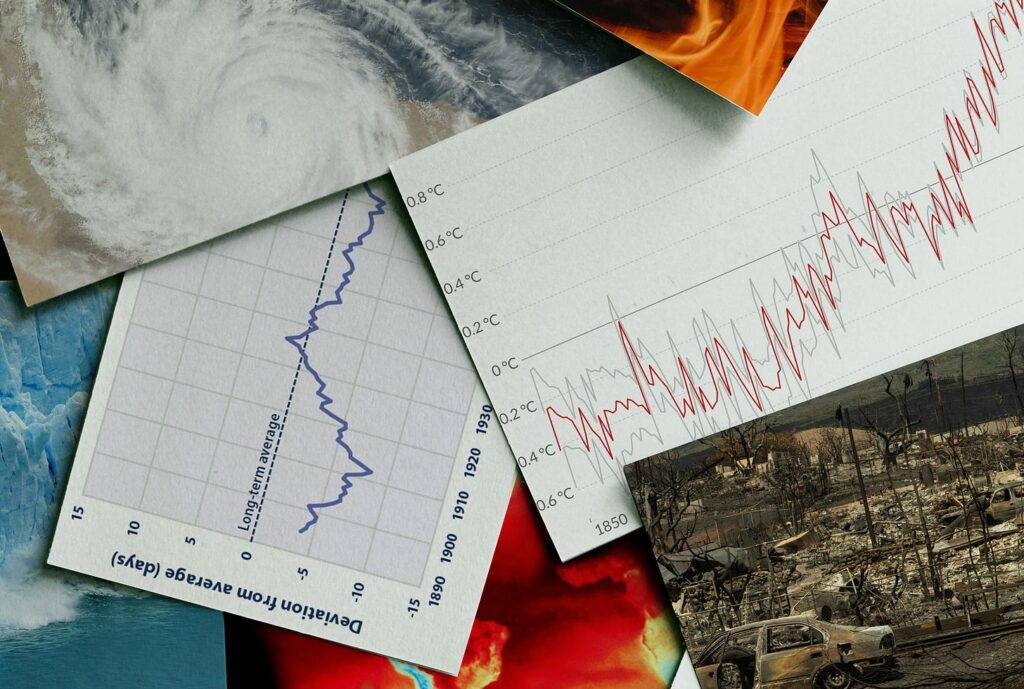- Scientific Alarmism weighs in with a warning “Why ‘Tipping Points’ Are the Wrong Way to Talk about Climate Change/ A new paper warns the concept of “tipping points” doesn’t do much to encourage climate action from laypeople and policymakers”. And if you’re wondering why a publication supposedly dedicated to science would be assessing rhetorical strategies for pushing policies, well, we refer you back to our various critiques of that magazine. But the big problem with this sort of yammering on is that we keep reaching “tipping points” but we never tip over, causing people to doubt that the fearmongers actually know what they’re talking about.
- BTW we’re keeping an eye on Scientific American to see whether under new management it can get through a day without hyperventilating about climate. And sure enough the Dec. 11 “Today in Science” actually made it through all four bullet points… only to relapse with “To improve local climate resilience, more U.S. communities and towns in the past several years have invested in self-contained power generation, storage and distribution systems, known as microgrids.” Zzzzzzz.
- In the face of a crisis, real or imagined, you can count on politicians to saunter into extravagance. Thus we hear from The Telegraph that “Britain is to build its first full scale carbon capture power station following almost two decades of delays.” Not “has built”, you’ll notice, but “is to build”. So the delays continue. However “The plan, announced by Sir Keir Starmer and backed by £22bn of public subsidy, is expected to create 2,000 jobs and could pave the way for further projects, with another already planned on Merseyside.” Is expected to. Oh, and if you’re wondering what the problem was, beyond the usual, it seems that “The decision follows two decades of delays by successive governments as they repeatedly tried and failed to reconcile the huge costs of the novel technology with the need for low carbon electricity.” Wait a minute. Huge costs? And here you said the green transition would save money as well as the planet and we’d all have three high-tech, laid-back, copacetic jobs.
- From NPR we get a fearless prediction: “How many species could go extinct from climate change? It depends on how hot it gets.” Which prompts a stale-dated Thanksgiving joke with a turkey looking at an app and saying “350°F? That can’t be right.” And at that temperature, if global not merely ovenal, even we think there’d be mass extinction. But then they sob “imagine a tiny mountain bird that eats the berries of a particular mountain tree. That tree can only grow at a specific elevation around the mountain, where it’s evolved over millennia to thrive in that microclimate. As global temperatures rise, both the tree and the bird will be forced to rise too, tracking their microclimate as it moves uphill. But they can only go so far.” And yes we grant that trees cannot grow in the air. Glad you paid that much attention in science class. But how about the bit where it was warmer in the Medieval Warm Period, and certainly the Holocene Climatic Optimum, not to mention the Eemian, and this particular partridge didn’t run out of pear trees? Yes but see “if global warming gets out of hand, warming four or five degrees Celsius, as many as 30% of species could be at risk.” And at 177 degrees Celsius you get the Maillard effect and nice crispy stuffing. What’s your point? Especially with weasely language like “at risk” in the text baked into “go extinct” in the headline.
- In addition to its tendency to make statements about energy entirely disconnected from reality, the Canadian government has a bad habit of making ones that are entirely disingenuous. For instance a press release that starts “In the 21st century, a reliable and affordable clean electricity grid is the backbone of a strong economy. Today more than 80 per cent of Canada’s electricity is generated from clean sources like hydropower, wind, solar, and nuclear – and it’s a big part of the reason why companies are choosing to invest in Canadian workers and business.” Just three problems. First, there is no evidence for the first sentence and it’s far from clear what might constitute such evidence. Second, it’s hydropower (an abundant resource here, but largely tapped out) and nuclear that are carrying the burden, not the wind and solar sneakily chucked in. And third, Canada has seen a catastrophic decline in business investment in the last decade under people hypnotized by this kind of rhetoric. Otherwise a fine pronouncement.
- The people promoting free-market climate hysteria over at The Hub on the theory that conservatives must leap aboard collapsing liberal bandwagons to prove that they are… uh… well, anyway, they now denounce Canada’s interprovincial trade barriers, which is correct as far as it goes. But not as far as they go: “Trade barriers are also holding back one of Canada’s fastest-growing export sectors: low-carbon technologies.” One of Canada’s fastest-growing export sectors? If so, it’s only because they’re growing from nothing to a bit fueled by government subsidies. Mind you “the market for low-carbon technology is expected to nearly triple in size to $2.8 trillion by 2035”. Yeah. By the same people who expect everything cute to die by 2050 if it gets 0.2 degrees warmer. (Someone else in the same publication points to key opportunities including “regenerative agricultural practices” and “proven approaches to enhance the alkalinity of our rivers and oceans.” Both soon to be trillion-dollar export industries for sure.)
- From the “if this is journalism” file, the New York Times “Climate Forward” asks “Where does the climate movement go from here?”, denounces Trump then interviews Bill McKibben, and tells us “fighting back against Trump’s policies remains a primary goal. But the climate movement also plans to spend the next four years hunkering down at the local level.” The climate movement? There’s just one, unified and clenching fists as it… uh… what does that verbiage even mean?
See Comments 
Tidbits
18 Dec 2024 | News Roundup



“In the 21st century, a reliable and affordable clean electricity grid is the backbone of a strong economy. Today more than 80 per cent of Canada’s electricity is generated from clean sources like hydropower, wind, solar, and nuclear"
If you want details on this, and the minor part that wind & solar plays, I can recommend a recent article in C2C Journal:
https://c2cjournal.ca/2024/12/zero-chance-the-costly-futility-of-canadas-net-zero-emissions-electricity-grid/